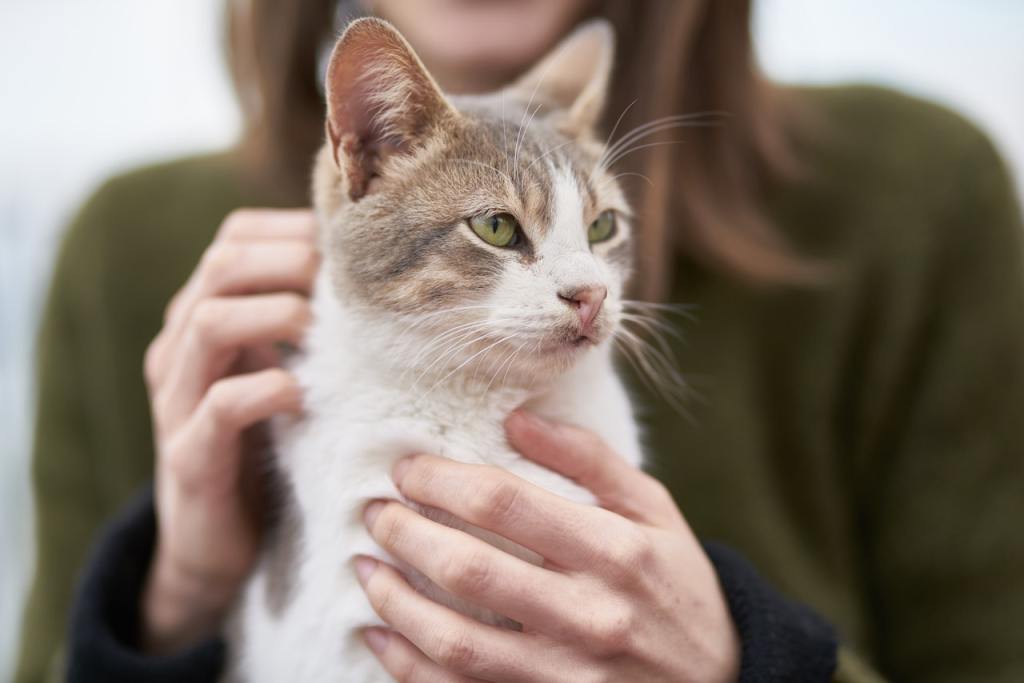Cats are our best friends, our constant companions, and our furry, purring lap warmers. While the debate between cat people and dog people seems endless, one fact remains: Pet parents are happier and healthier than those who don’t have pets.
We love cats, dogs, birds, rabbits, and reptiles equally here at PawTracks, but did you know that there are scientific benefits to being a cat person? We’re here to share the top three cat health benefits and why sharing your home with a feline companion is the best thing you do for yourself. We’ll also recommend some of our favorite beginner-friendly cat breeds.

Here’s how being a cat person benefits you
Sharing your home with a cat is a magical experience. From their sweet, sleepy blinks to their precious whiskers, everything about cats can best be described as “adorable.” But just because your cat is cute, that doesn’t mean she’s good for you. Or does it? Let’s delve into three scientifically proven ways your cat improves your life.
Cats can make you feel better
In a study conducted by Indiana University Media School, researchers surveyed over 7,000 people after they watched cat videos on the internet. The results may surprise you: Scientists found that even watching videos of other people’s cats improves your mood and decreases negative emotions in viewers. Film your cat’s playful antics, and then rewatch them later — they will boost your mood!
Cats can reduce your risk of heart disease
Numerous studies have found that being a cat parent reduces your stress levels. We all know that high levels of stress and cardiovascular disease are linked, making a drop in stress extremely beneficial to your heart health. In fact, having a cat can lower your risk of heart disease and stroke by a whopping 30%!
Cats can heal their humans
Yes, you read that correctly the first time. As surprising — and fantastical — as it sounds, cats can actually promote healing in their human family members. Although her adorable chirps can only brighten your day, your cat’s purr can improve your physical health. Research has shown that frequencies in the range of 18-35 Hertz help repair joint damage after injury, and the vibrations from your cat’s purr clocks in at a frequency of 25-150 Hertz.

The best cat breeds for beginners
If you’ve been considering adopting a cat and don’t already have one, this may be the sign you’ve been waiting for. However, some cat breeds are more beginner-friendly than others. Here are a few of our favorite choices:
Maine coon
As one of the largest cat breeds available, the Maine coon makes an ideal companion if you’re concerned about having a tiny creature underfoot. Maine coons are sweet and loving toward all members of the family, including children and other pets.
Scottish fold
These clever kittens are another big hit with first-time pet parents. They’re curious, playful, and gentle around children.
Siamese
Perhaps the most instantly recognizable cat breed, the Siamese is a wonderful first cat. They don’t require much grooming, and they adore spending time with the family.
Whether you’re a first-time cat parent, or you’re looking to add a new member to the family, these regal roommates will keep you company, make you smile, and they can even improve your health.
Editors' Recommendations
- Do puppies sleep a lot? These are the perfectly normal sleeping habits of a healthy pup
- Could it be a dog paw infection? Signs, symptoms, and treatments for these pesky, painful issues
- What you need to know about your cat’s swollen lip – what caused it and how to help it heal
- Why is my dog whining? 6 common reasons and what you can do to stop it
- A guide to great gut health: 5 benefits of probiotics for dogs you may not know about




